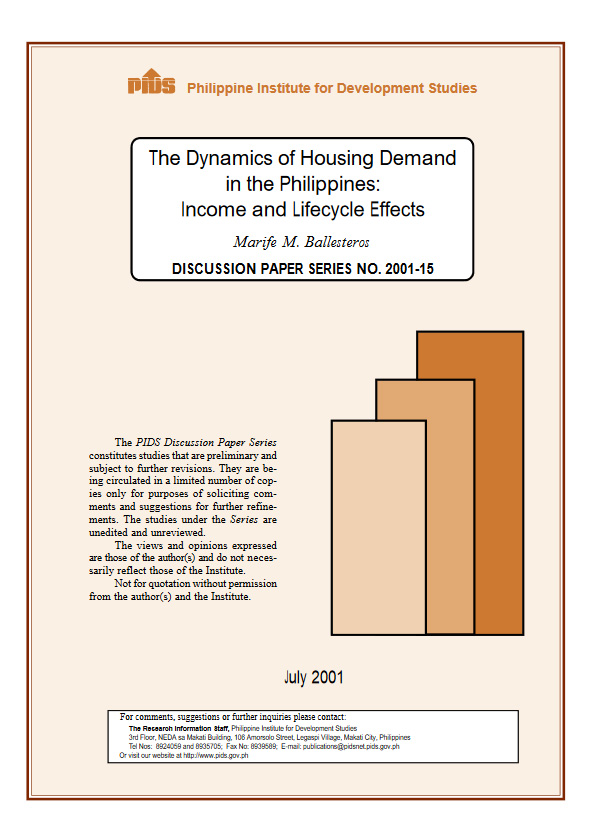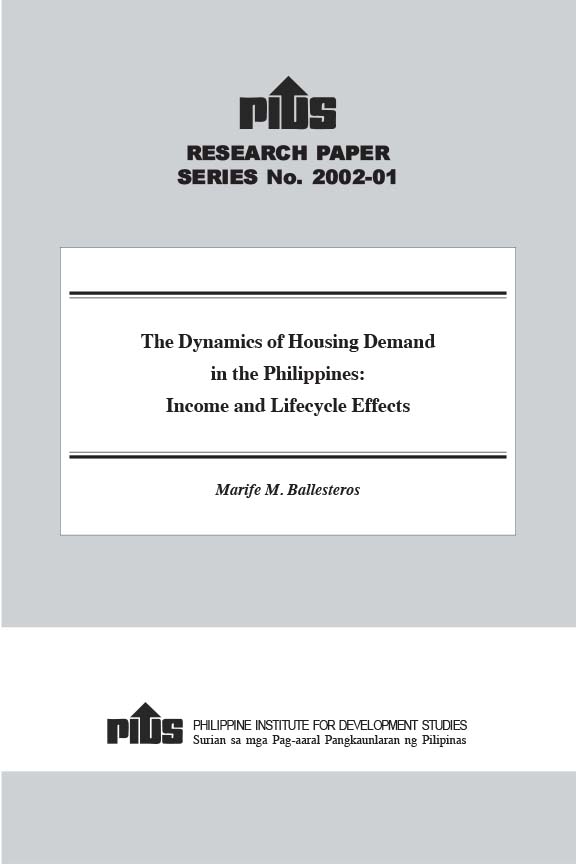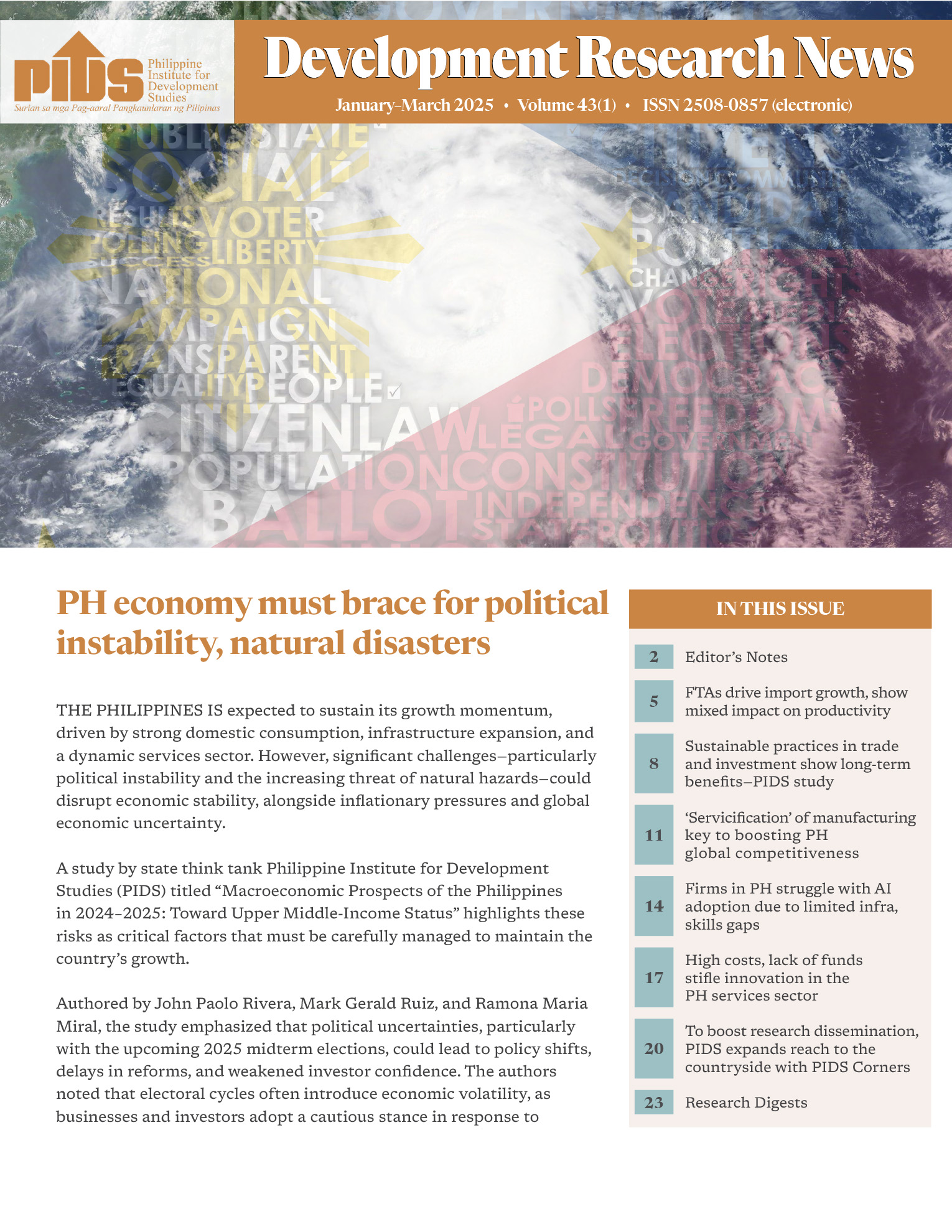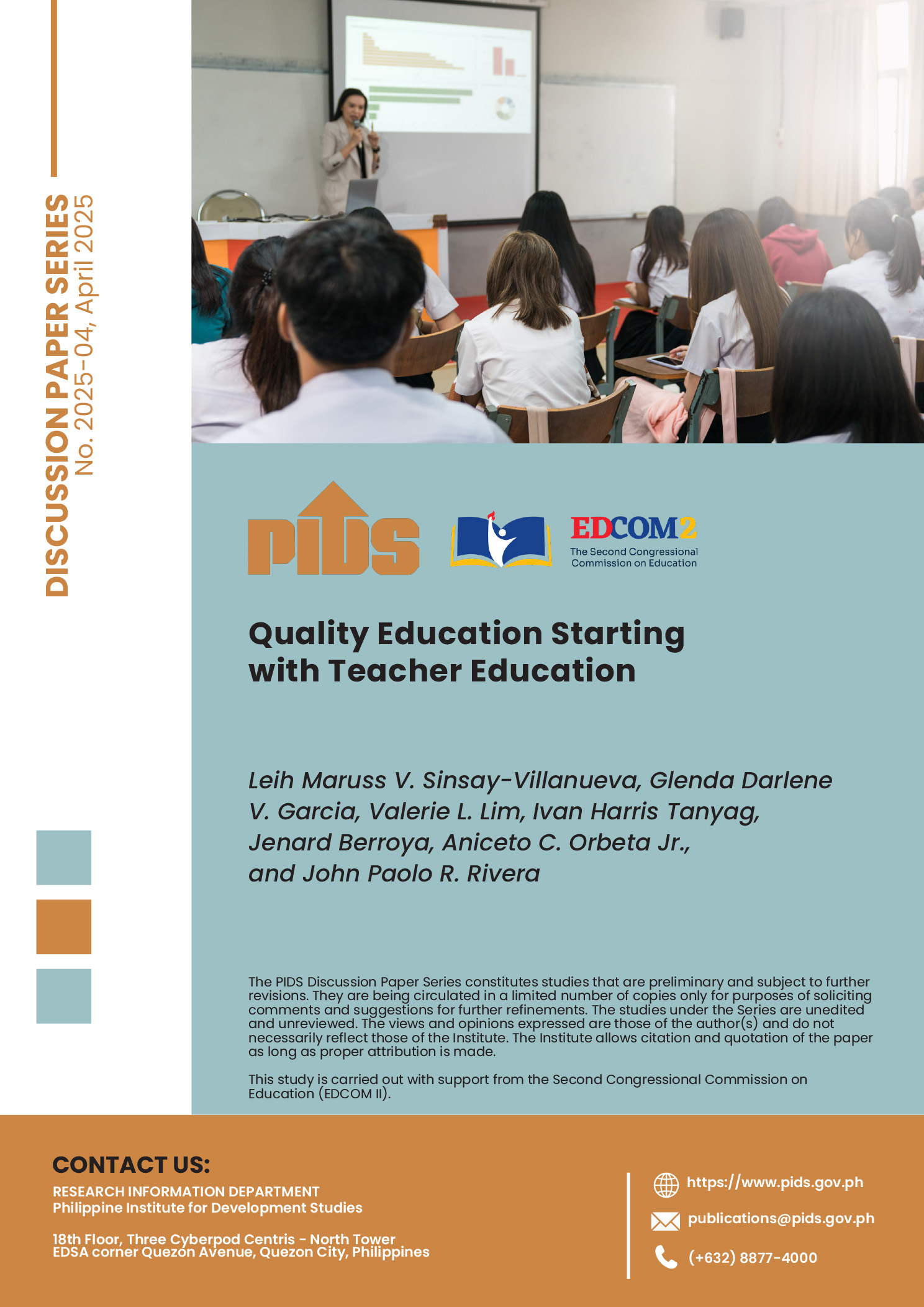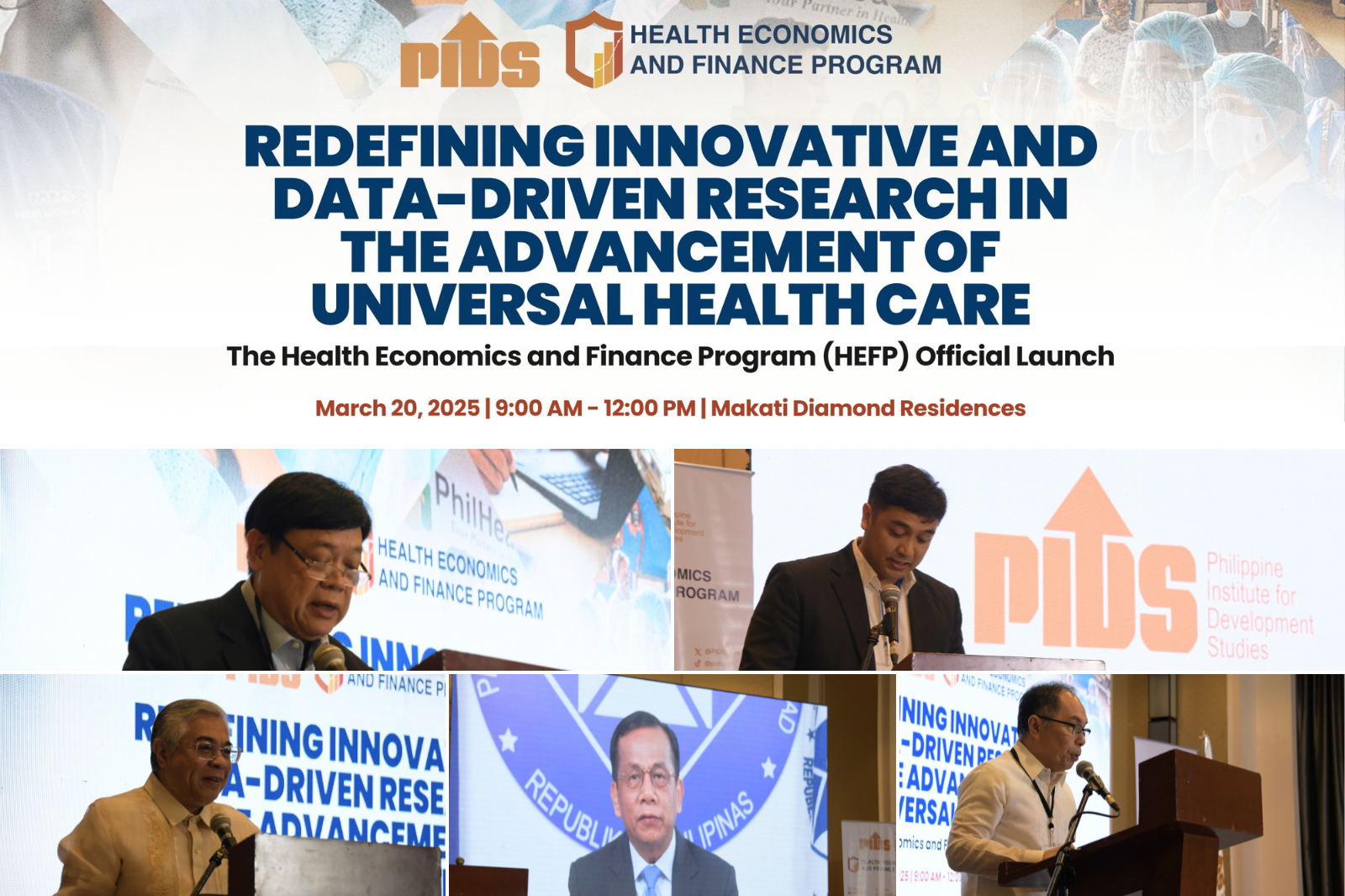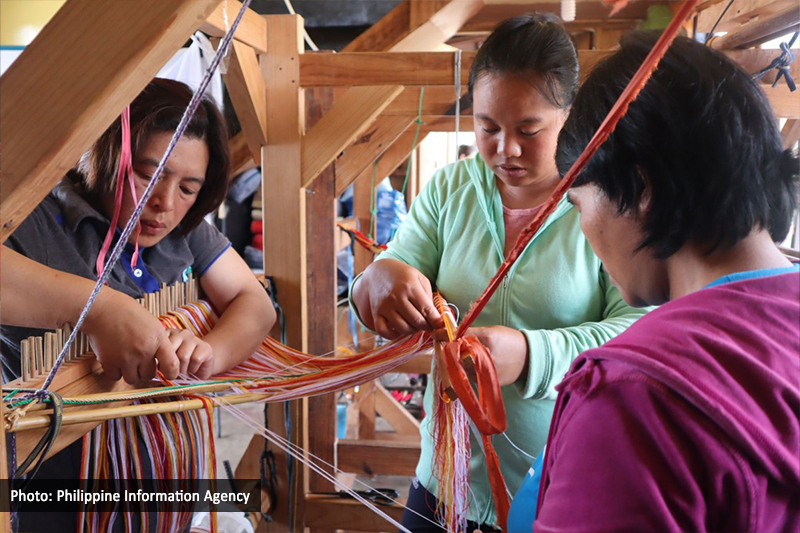This paper examines the housing consumption pattern of households in the Philippines given their socioeconomic characteristics and the existing conditions in the land and housing market. Two basic issues are examined: one, how is housing adjustment and expenditure associated with income and demographic changes; and two, do housing consumption in the country suggest the presence of significant housing market imperfections or capital market imperfections. The results point to the lack of housing alternatives specifically for the low-income households in the formal housing market. Housing adjustments and the path toward acceptable housing are thus constrained. Estimates of income elasticity show that for most households, an increase in income will not be spent on housing but to meet other basic household needs. This being the case, there has to be a significant increase in income to bring about a significant change in housing conditions. In the long run, economic development may bring about the needed boost in income, however, in the short-run, government has look into alternative forms of low-cost housing. One option is developing the low-cost rental market. Another option is finding innovative financing schemes that would allow low monthly amortization. Lastly, government has to institute ways to effectively reduce the high cost of housing in the country.
Citations
This publication has been cited 13 times
- Ahmad, Ayaz, Nasir Iqbal, and Rehana Siddiqui. 2018. Determinants of housing demand in urban areas of Pakistan: Evidence from the PSLM. The Pakistan Development Review, 57, no. 1, 1-25. Pakistan Institute of Development Economics.
- Andong, Rebeca Fontanilla and Edsel Sajor. 2017. Urban sprawl, public transport, and increasing co2 emissions: The case of metro manila, Philippines. Environment, Development and Sustainability: A Multidisciplinary Approach to the Theory and Practice of Sustainable Development,19, no. 1, 99-123. Springer.
- Ballesteros, Marife M.. 2001. Benefits (and losses) from rent control in the Philippines: An empirical study of metro manila. Discussion Papers DP 2001-23. Philippine Institute for Development Studies.
- Ballesteros, Marife M.. 2003. Benefits (and losses) from rent control in the Philippines: An empirical study of metro manila. Research Paper Series RPS 2002-09. Philippine Institute for Development Studies.
- Cruz, Prince Christian R. 2008. Transaction costs and housing affordability in Asia. International Real Estate Review, 11, no. 1, 128-150. Global Social Science Institute.
- Dasgupta,Basab, Somik V. Lall, and Nancy Lozano Gracia. 2014. Urbanization and housing investment. Policy Research Working Paper Series 115004. The World Bank.
- Dasgupta,Basab, Somik V. Lall, and Nancy Lozano Gracia. 2014. Urbanization and housing investment. Policy Research Working Paper Series 7110. The World Bank. .
- Debuque-Gonzales, Margarita. 2013. Empirical determinants and patterns of research and development investment in Asia. ADB Economics Working Paper Series 364. Asian Development Bank.
- Deuchert, Eva and Christina Felfe. 2013. The tempest: Natural disasters, early shocks and children's short- and long-run development. CESifo Working Paper Series 4168. CESifo.
- Doling, John, Paul Vandenberg, and Jade Tolentino. 2013. Housing and housing finance—a review of the links to economic development and poverty reduction. ADB Economics Working Paper Series 362. Asian Development Bank.
- Eva, Deuchert and Christina Felfe. 2015. The tempest: Short- and long-term consequences of a natural disaster for children׳s development. European Economic Review, 80(C), 280-294. Elsevier.
- Himanshu. 2013. Poverty and Food Security in India. ADB Economics Working Paper Series 369. Asian Development Bank.
- Roidoung, Phanida. 2013. Factors of housing decisions for low and middle-income households in the greater Bangkok area. The Empirical Econometrics and Quantitative Economics Letters, 2, no. 3, 13-26. Faculty of Economics, Chiang Mai University.

